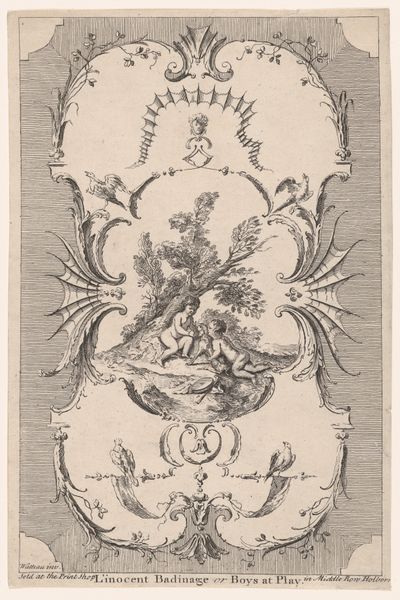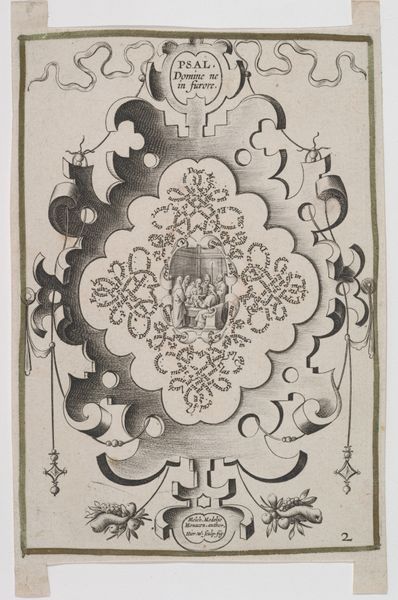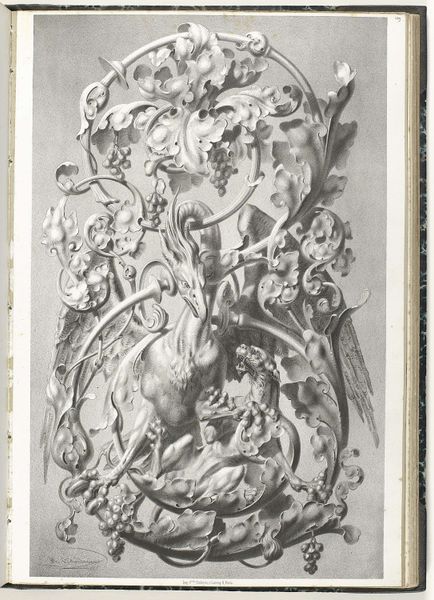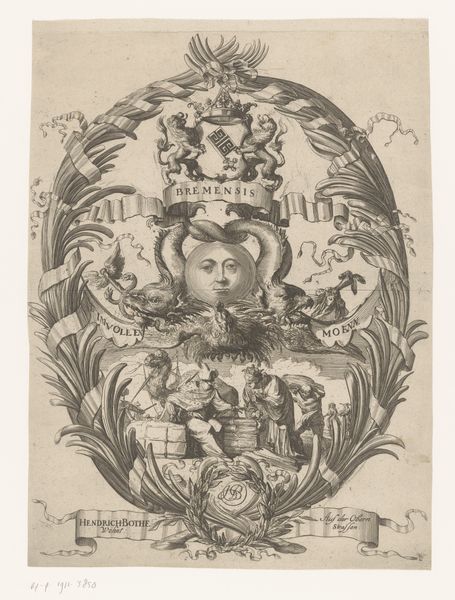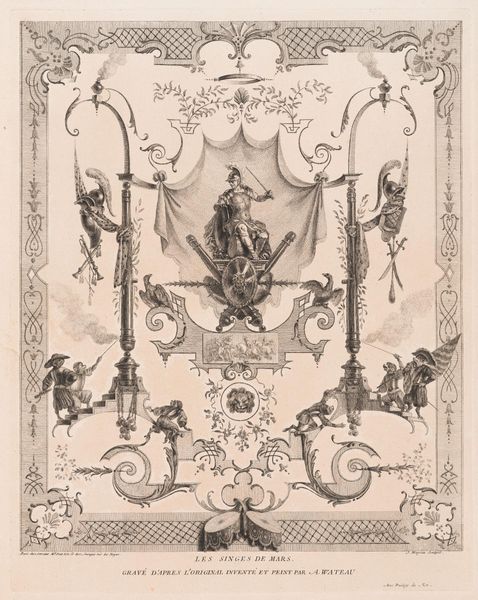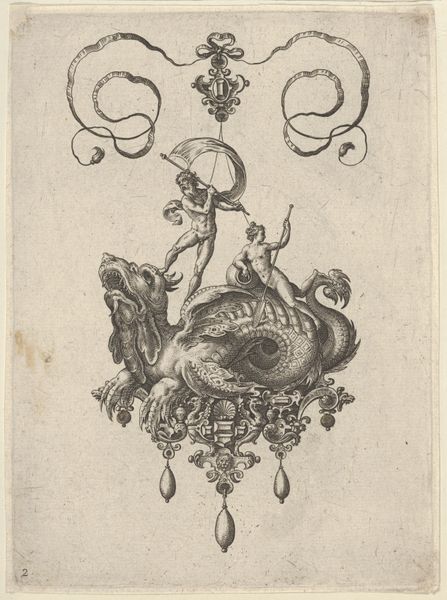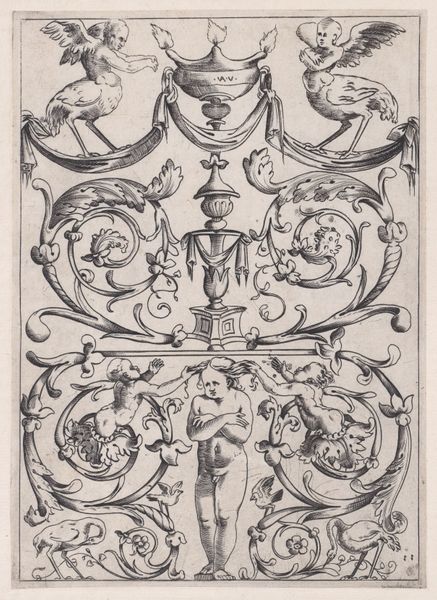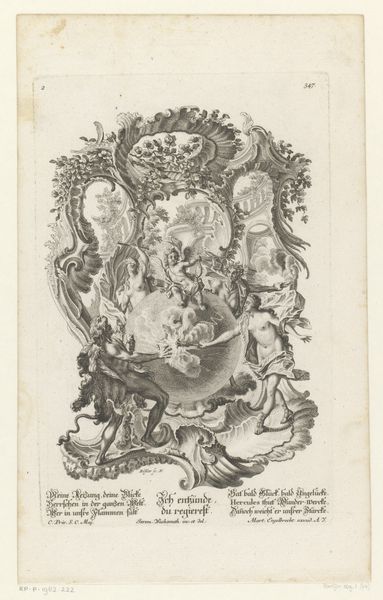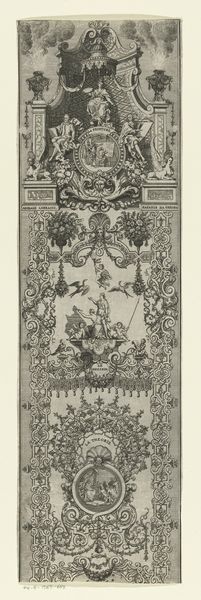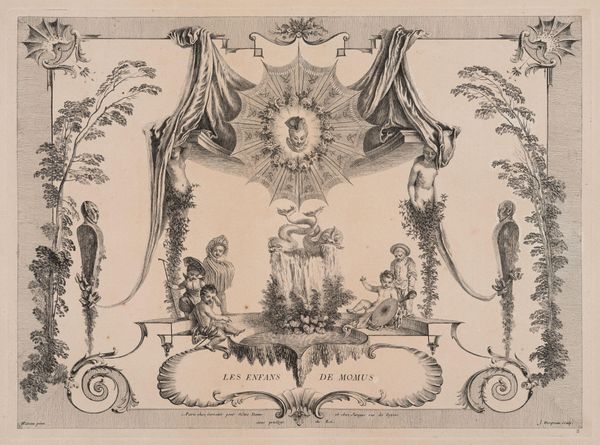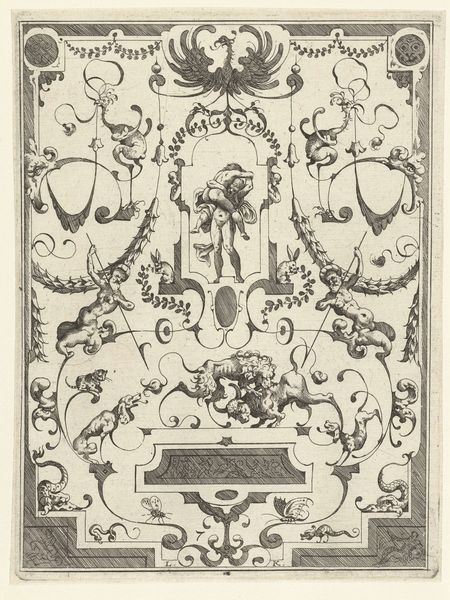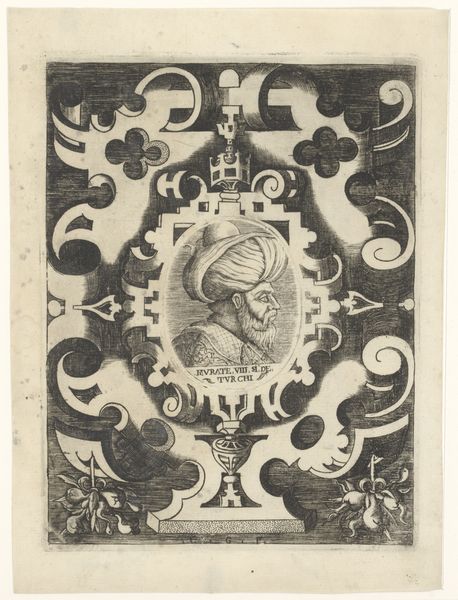
carving, relief, textile, sculpture, engraving
#
portrait
#
carving
#
baroque
#
relief
#
textile
#
figuration
#
sculpture
#
history-painting
#
decorative-art
#
engraving
Dimensions: H. 25 3/4 x W. 21 1/2 inches (65.4 x 54.6 cm)
Copyright: Public Domain
Curator: This chair panel, dating from 1700 to 1715, is currently housed at the Metropolitan Museum of Art. Created by Daniel Marot the Elder, it embodies the Baroque style through a combination of textile work and engraving, also showcasing his engraving skills. Editor: It certainly possesses a dramatic flair. The sheer density of ornamentation, the weighty figures, and that central scene... it's all quite overwhelming at first glance. It makes you wonder about the kind of statement it intended to make. Curator: The statement, I believe, revolves around power and status. Note the figures flanking the central scene. These strongmen or Atlas-like figures carry symbolic weight, signifying a solid foundation of wealth and lineage. They recall figures of strength, resilience, stability, reflecting the ambitions of the patron. Editor: And speaking of that central scene, is it a history painting of some kind? Or possibly another interpretation? It has an almost frenetic energy in the engraving's small details, contrasting the rest of the solid figures surrounding it. The contrast helps highlight it. Curator: It’s figuration—but it speaks more broadly to Classical ideals. We’re seeing an allegory, perhaps a scene lifted from mythology, and is indicative of an aspirational worldview, positioning the sitter in alignment with great leaders, Gods, figures of the era and antiquity. The shell motif atop this central scene connects it to Venus and the sea, thus tying this historical work into ideas around ancestry and divinity. Editor: The whole thing is masterfully rendered; consider how those garlands weave throughout, guiding the eye, unifying the elements—but even from the black-and-white photograph it projects a tactile experience, a feeling of lavish expense through surface play and detailed depth of its subjects. Curator: The textiles add yet another layer to this understanding, with their intricate texture and symbolic imagery serving not only as adornment but also as narrative. Each detail carefully considered and woven together speaks volumes about the cultural values and ambitions of the period, doesn’t it? Editor: Indeed. Looking at this chair panel, I get a sense of the past converging. It’s no longer merely an object; it evokes stories, interpretations, it transcends to the viewer a dialogue through craftsmanship and intent, speaking even to a world that barely knows its original purpose.
Comments
No comments
Be the first to comment and join the conversation on the ultimate creative platform.
